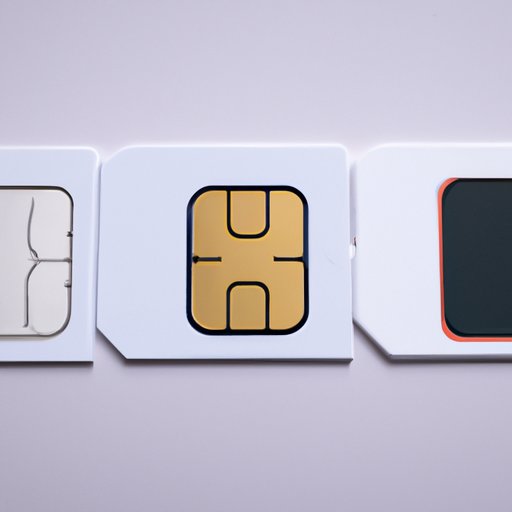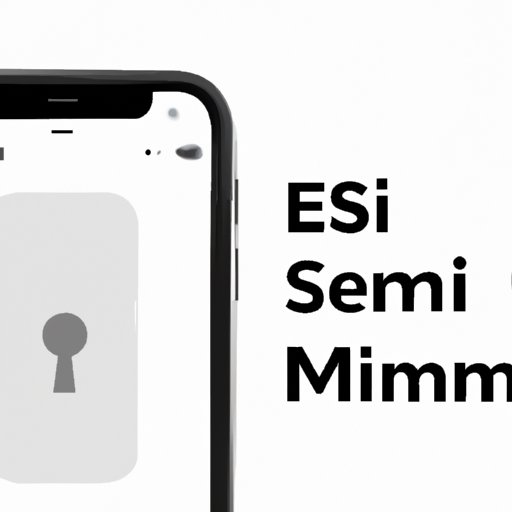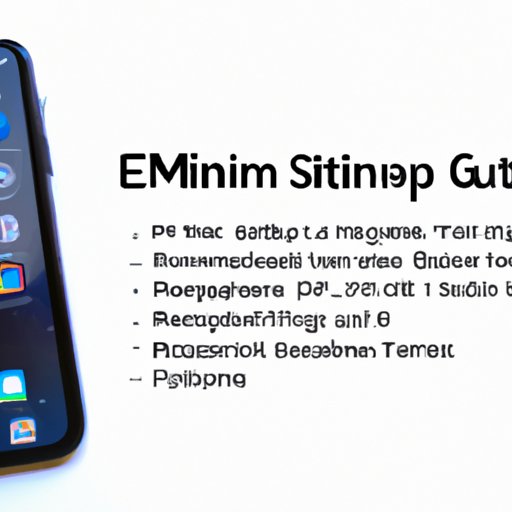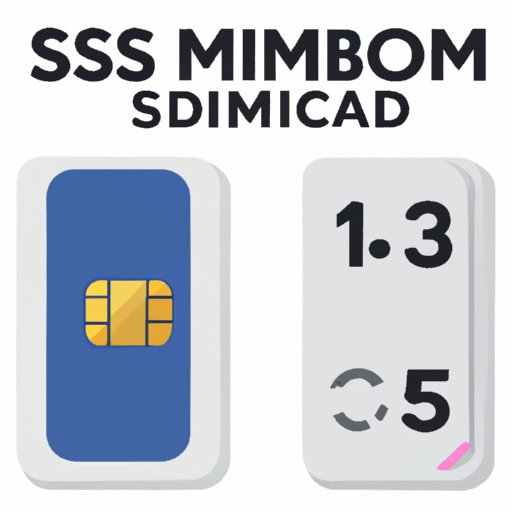Introduction
The eSIM (embedded SIM) is a new technology for mobile phones that allows users to store their phone number digitally instead of using a physical SIM card. This technology has been available on Android phones for some time, but it wasn’t until recently that Apple released the first eSIM-enabled iPhones. In this article, we’ll explore how eSIM works on iPhones and explain the benefits of using this technology.
Step-by-Step Guide to Activating an eSIM on an iPhone
If you want to use an eSIM on your iPhone, the first step is to choose a carrier and purchase a plan. Once you have purchased a plan, you will need to download the carrier’s eSIM profile and then activate it on your device. Here is a step-by-step guide to help you get started:
1. Choosing a Carrier
Before you can activate an eSIM on your iPhone, you need to choose a carrier. There are many different carriers that offer eSIM plans, so take some time to research the different plans and find one that suits your needs. Make sure to read the fine print and understand the terms and conditions before committing to a plan.
2. Downloading eSIM Profile
Once you have chosen a carrier and purchased a plan, they will provide you with an eSIM profile. This profile contains all of the necessary information needed to activate your eSIM on your iPhone. You can download the profile directly from the carrier or through a third-party app such as eSIM Manager.
3. Activating Your Phone
Once you have downloaded the eSIM profile, you can activate it on your device. To do this, open the Settings app on your iPhone and select “Cellular.” Then, tap “Add Cellular Plan” and follow the prompts to complete the activation process. After the activation is complete, you will be able to make calls, send texts, and access data on your eSIM.

Comparison of Traditional SIM Cards and eSIMs on iPhones
Now that we’ve gone over how to activate an eSIM on an iPhone, let’s compare traditional SIM cards and eSIMs. Both technologies offer similar functionality, but there are some key differences between them.
Advantages of eSIMs
One of the main advantages of eSIMs is that they are much smaller than traditional SIM cards. This makes them easier to carry around and more convenient to use. Additionally, eSIMs are more secure than traditional SIM cards because they are harder to replicate or tamper with. Finally, eSIMs can be activated remotely, which eliminates the need to physically insert a SIM card into your device.
Disadvantages of eSIMs
The main disadvantage of eSIMs is that they are not yet widely supported by carriers. This means that not all carriers offer eSIM plans and some may charge extra for activating an eSIM. Additionally, eSIMs require a compatible device and cannot be used with older phones. Finally, if you need to switch carriers, you will need to deactivate your current eSIM and activate a new one.

Exploring the Security Implications of eSIMs on iPhones
When using an eSIM on an iPhone, it is important to consider the security implications. With an eSIM, your personal data is stored in the cloud, which means it can be accessed by hackers or malicious actors. As such, it is important to take steps to protect your data when using an eSIM.
Data Protection
To protect your data when using an eSIM, it is important to use a strong password and two-factor authentication. Additionally, make sure to only download eSIM profiles from trusted sources and avoid downloading any suspicious apps or files. Finally, make sure to keep your device updated with the latest security patches.
Authentication
It is also important to ensure that your eSIM is properly authenticated. When setting up your eSIM, make sure to verify the identity of the carrier and confirm that the eSIM profile is authentic. Additionally, check to see if the carrier offers any additional authentication methods such as biometric authentication or PIN codes.

Troubleshooting Tips for eSIM Issues on iPhones
If you are having trouble activating or using an eSIM on your iPhone, there are a few troubleshooting tips that can help. First, try resetting your network settings. To do this, go to the Settings app and select “General” followed by “Reset.” Then, select “Reset Network Settings” and enter your passcode to confirm. Once the reset is complete, try activating your eSIM again.
If resetting your network settings doesn’t work, try restarting your iPhone. To do this, press and hold the power button until the “slide to power off” slider appears. Slide the slider to the right and wait for your device to shut down. Once it is off, press and hold the power button again until the Apple logo appears.
Exploring New eSIM Features on iPhones
In addition to the standard eSIM features, newer iPhones also offer a few new features. One of the most notable features is dual SIM capabilities, which allow you to use two different phone numbers on one device. This is especially useful for business users who need to manage multiple phone lines. Additionally, newer iPhones are also 5G-compatible, meaning they can connect to faster 5G networks.
Conclusion
In conclusion, eSIMs offer many advantages over traditional SIM cards, including convenience, security, and remote activation. However, it is important to understand the security implications of using an eSIM and take steps to protect your data. Additionally, newer iPhones offer dual SIM capabilities and 5G compatibility, allowing you to take advantage of faster speeds and better coverage. By following this guide, you should now have a better understanding of how eSIMs work on iPhones.
(Note: Is this article not meeting your expectations? Do you have knowledge or insights to share? Unlock new opportunities and expand your reach by joining our authors team. Click Registration to join us and share your expertise with our readers.)
